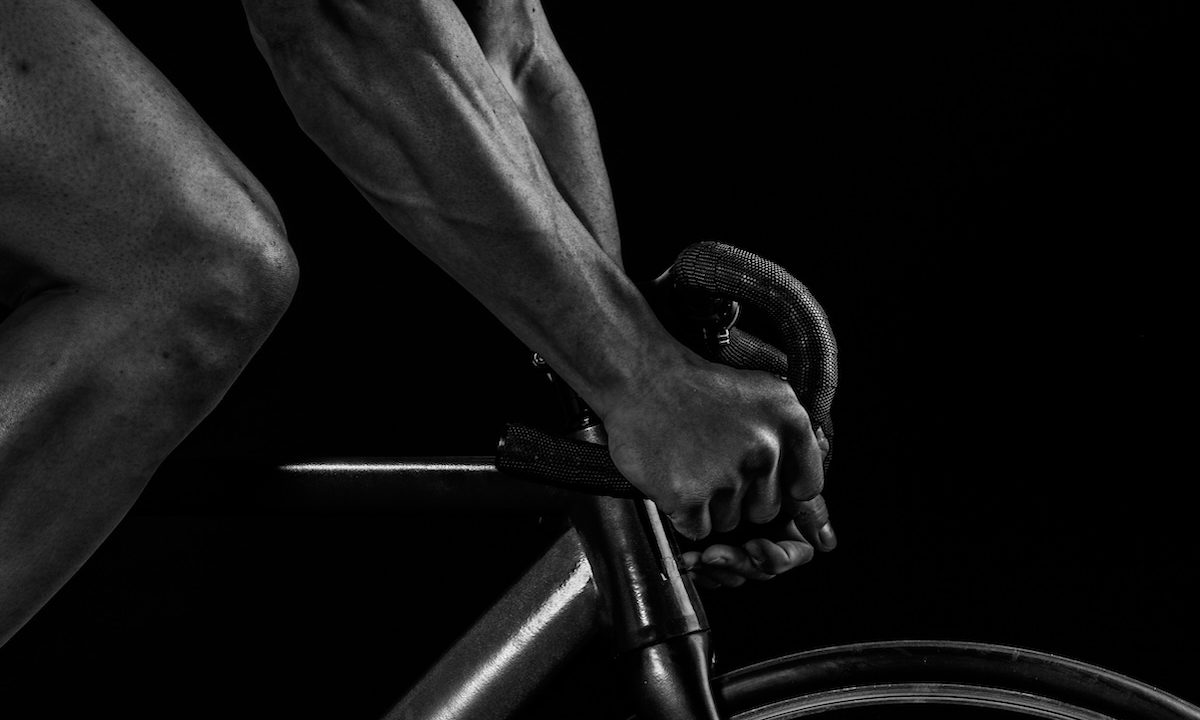
For a cyclist, legs are crucial. Whether riding a stationary bike or a traditional one, you lean heavily on the lower body to carry you up hills and through sprints. A solid ride can also work the legs big-time, and resistance training may be the last thought. Plus, don’t those hills count as legs exercises?
The short answer is yes, but building strength through weight-bearing exercises is still essential for your overall fitness (and ability to stay in the saddle). Cycling certainly helps you strengthen and tone the legs. However, the moves are repetitive. Varying how you work your leg muscles can help prevent injury. Also, you want to ensure you’re building strength throughout the leg, not the quads and hamstrings that can dominate a cycling workout (this step also helps guard against overuse injuries). To get you started, we shared the best legs exercises for cyclists.
Strengthen your cyclist legs with these lower-body exercises

Ready to put the pedal to the floor (figuratively speaking) and strengthen the legs so you can ride longer and stronger? These legs exercises for cyclists will help.
Romanian deadlifts
Romanian deadlifts work the heavy hitters, including the hamstrings and glutes—both critical muscle groups for cyclists. They also serve as a sneaky-good core workout, which can help firm up posture and reduce back pain from riding.
How to do a Romanian deadlift (RDL)
- Stand with feet hip-width apart, a slight bend in the knee, and a dumbbell in each hand in front of the thighs. (Beginners: Bodyweight is fine to start.)
- Hinge forward at the hips, maintaining a straight back as you lower the dumbbells as far as possible while maintaining proper form. Avoid arching the back.
- Reverse the position to raise back to the starting position. Ensure knees keep a slight bend and do not lock.
- Repeat
Kettlebell swing
Kettlebell swings build power (they double as a cardio move) and strength. While they’re a stellar full-body workout, they target the glutes, hamstrings, and quads in the lower body.
- Stand straight, gripping the kettlebell with both hands in front of your thighs.
- Squeeze the shoulder blades, bring the belly button in toward the spine, and bend slightly at the knees.
- Shift the weight into your heels as you lower the butt down as if you’re about to sit in a chair.
- Drive explosively through the heels and swing the kettlebell upward so it runs perpendicular to the chest.
- Return to start.
- Repeat quickly.
Calf raises
While you may not feel your calves working during a cycling workout, they play a vital role in the down pedal. Also, working more than the glutes, hamstrings, and quads build full-leg strength, preventing you from leaning too heavily on them during a cycling workout and winding up with an overuse injury.
- Stand straight with the core engaged and feet hip-width distance apart.
- Press through the balls of the feet to stand on your tiptoes. (You can use a chair or wall to balance if needed, but keep weight evenly distributed and avoid leaning on the prop.)
- Return to start.
- Repeat.
Jump lunges
Like the kettlebell swing, jump lunges boast cardio bursts. Expect to burn the thighs, glutes, and calves.
- Stand tall. Take a giant step behind to assume a lunge position, with the back leg forming a 90-degree angle.
- Explode through the legs as you move the front leg back and back leg to the front.
- Repeat as soon as the feet hit the ground.
Glute bridges
The humble glute bridge is an excellent choice for beginners or people who don’t have access to a gym, such as when traveling. Obviously, the glutes get some work, but you’ll also target the hamstrings and mid-section.
- Lie on the ground.
- Bend the knees, allowing the feet to rest flat on the ground.
- Bring the belly button toward the spine and gradually raise the hips.
- Squeeze the glutes at the top. (Optional: Hold for 30 to 60 seconds.)
- Slowly lower down.
- Repeat.
How to start weight-bearing legs exercises: Pointers for beginners

Perhaps you’re returning to weight training after a long lag or had previously subscribed to the idea that cyclists’ legs were built through doing hills — all good. These tips will help you ease into leg exercises for cyclists so you get the most gain with the smallest amount of pain.
- Start slow. You’ll want to aim to do weight-bearing exercises — either a longer full-body or briefer leg day — two to three times per week. However, beginning with once-weekly resistance training sessions is something.
- Pick weight wisely. What qualifies as “light,” “medium,” and “heavy” weights is personal. Choose weights that make it challenging to complete the last one to two reps but not impossible to get any reps in. Starting with body weight is also OK, and even people experienced in weight training can reap the benefits of calisthenics.
- Focus on form. Form is always crucial. Use your gradual progression into weight training to prioritize learning good form. A personal trainer can help.
- Warm up and recover. A five to 10-minute warm-up with cardio and light stretching (your bike ride counts) as cardio and a five to 10-minute stretch following a workout can reduce injury risk.
- Build in recovery. As you progress to strength training multiple times per week, be sure to have at least one day between working a specific muscle group (or do full-body every other day).
Summary

Yes, cycling and hills can boost leg strength. However, you’ll still want to develop a resistance training cadence. The movement involved in cycling is repetitive, so you work the same muscles in the same way constantly, putting you at risk for overuse injuries. Working muscles in different ways can guard against that and make you feel stronger in the saddle. Resistance training moves such as kettlebell swings and Romanian deadlifts target the quad, hamstring, and glute muscles you use heavily in cycling. Ensure you’re working lesser-used muscles, like calves, to build full-leg strength. Remember, slow and steady wins the race. If you’re new to strength training, focus on form and pick lighter weights that challenge but don’t exhaust you and progress gradually.



